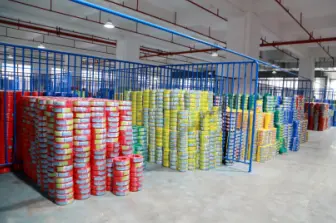Model Meaning and Common Faults of Control Cables
In fact, we often use control cables in our lives, and control cables are used in many control circuits. So, control cables are widely used indeed. Then what are control cables? In fact, control cables are power connection lines that directly transmit electrical energy from the power distribution point of the power system to various electrical equipment and appliances. They are generally suitable for industrial and mining enterprises, energy and transportation departments and other fields.
1. Common faults of control cables
Common line faults of control cables include mechanical damage, insulation damage, insulation damp, insulation aging deterioration, overvoltage, cable overheating faults. When there is a problem with the control cable, it is necessary to cut off the power control of the cable in time, and then find the fault point, analyze and check the fault on the control cable, and then repair it to prevent other inconvenience caused by the fault.
2. Model of control cables
The meaning of each part on the control cable model is different. The first part of the series code on the control cable: K--control cable; the second part of the code refers to the material of the control cable (V--polyvinyl chloride insulation, YJ--cross-linked polyethylene or cross-linked polyolefin insulation, V --PVC sheath, Y--polyethylene or polyolefin sheath); the third part code refers to the structural characteristics of the control cable (P-- braided shield, P2-- copper tape shield, P3-- aluminum/ Plastic composite film shielding, R--soft structure (mobile laying), 2--double steel tape armor, 3--steel wire armor, 2 (the second number)--polyvinyl chloride outer sheath, 3 (part Two numbers)-polyethylene or polyolefin outer sheath); the fourth part represents the rated voltage (450/750V), the rated voltage of the control cable is generally unchanged; the fifth part represents the control cable specifications, that is, the number of cores and area of the control cable (the specifications of the control cable represent the number of cores of the control cable × the cross-sectional area of each core).
Latest News & Blog
 English
English  français
français  Deutsch
Deutsch  العربية
العربية  tiếng việt
tiếng việt  ไทย
ไทย  čeština
čeština  Indonesia
Indonesia  Eesti
Eesti  български
български  slovenčina
slovenčina 



